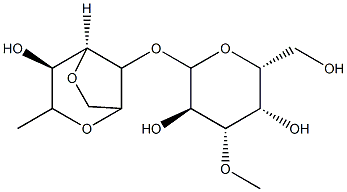Agar
- CAS No.
- 9002-18-0
- Chemical Name:
- Agar
- Synonyms
- Agar powder;Agar-Agar;MACCONKEY AGAR;gar;bengal;Gelose;VEGITONE MACCONKEY AGAR NO 1;Agar;ceylon;TC AGAR
- CBNumber:
- CB6704452
- Molecular Formula:
- C14H24O9
- Molecular Weight:
- 336.33496
- MDL Number:
- MFCD00081288
- MOL File:
- 9002-18-0.mol
| Melting point | 85-95 °C |
|---|---|
| FEMA | 2012 | AGAR (GELIDIUM SPP.) |
| storage temp. | room temp |
| solubility | H2O: 1.5% with heat |
| form | shredded |
| color | Brownish yellow |
| Odor | Odorless |
| PH Range | 5 - 7 |
| PH | 6.5-6.8 (1.5% in gel, after autoclaving) |
| Odor Type | bland |
| Water Solubility | SOLUBLE IN HOT WATER |
| Sensitive | Moisture Sensitive & Hygroscopic |
| Merck | 14,184 |
| Stability | Stable. Incompatible with strong oxidizing agents. |
| CAS DataBase Reference | 9002-18-0(CAS DataBase Reference) |
| FDA 21 CFR | 184.1115; 582.7115; 310.545 |
| Substances Added to Food (formerly EAFUS) | AGAR (GELIDIUM SPP.) |
| SCOGS (Select Committee on GRAS Substances) | Agar-agar |
| EWG's Food Scores | 1 |
| FDA UNII |
GRACILARIA GRACILIS POLYSACCHARIDES (3PBT7NM2M0) AGAR, UNSPECIFIED (89T13OHQ2B) PLOCAMIUM CARTILAGINEUM POLYSACCHARIDES (LPT5H1B7X5) |
| EPA Substance Registry System | Agar (9002-18-0) |
SAFETY
Risk and Safety Statements
| Symbol(GHS) |  GHS07 |
|||||||||
|---|---|---|---|---|---|---|---|---|---|---|
| Signal word | Warning | |||||||||
| Hazard statements | H315-H319-H335 | |||||||||
| Precautionary statements | P261-P271-P280 | |||||||||
| Hazard Codes | Xn | |||||||||
| Risk Statements | 22-36/37/38 | |||||||||
| Safety Statements | 26-36-24/25 | |||||||||
| WGK Germany | 2 | |||||||||
| RTECS | AW7950000 | |||||||||
| F | 3 | |||||||||
| TSCA | Yes | |||||||||
| HS Code | 13023100 | |||||||||
| Toxicity | LD50 orally in Rabbit: 11000 mg/kg | |||||||||
| NFPA 704 |
|
Agar price More Price(96)
| Manufacturer | Product number | Product description | CAS number | Packaging | Price | Updated | Buy |
|---|---|---|---|---|---|---|---|
| Sigma-Aldrich | 70143 | MacConkey Agar No 1 suitable for microbiology, NutriSelect? Plus | 9002-18-0 | 500g | $106 | 2024-03-01 | Buy |
| Sigma-Aldrich | 70143 | MacConkey Agar No 1 suitable for microbiology, NutriSelect? Plus | 9002-18-0 | 1kg | $182 | 2024-03-01 | Buy |
| Sigma-Aldrich | 56763 | Agar high purity, low ionic content, low gel strenght | 9002-18-0 | 500g | $543 | 2024-03-01 | Buy |
| Sigma-Aldrich | 12177 | Agar Suitable for inclusion in culture media. | 9002-18-0 | 1kg | $275 | 2024-03-01 | Buy |
| Sigma-Aldrich | 1.01615 | Agar extra pure, EMPROVE? ESSENTIAL Ph Eur,BP | 9002-18-0 | 1kg | $265 | 2024-03-01 | Buy |
Agar Chemical Properties,Uses,Production
Description
Agar is a dried, hydrophilic, colloidal polysaccharide complex extracted from the agarocytes of algae of the Rhodophyceae. The structure is believed to be a complex range of polysaccharide chains having alternating a-(1!3) and b-(1!4) linkages. There are three extremes of structure noted: namely neutral agarose; pyruvated agarose having little sulfation; and a sulfated galactan. Agar can be separated into a natural gelling fraction, agarose, and a sulfated nongelling fraction, agaropectin.
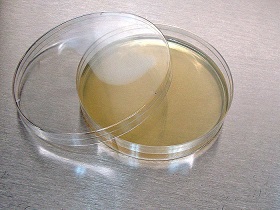
Nutrient Agar
Chemical Properties
Agar is produced by some red algae species (Rhodophyceae), especially Gelidium and Gracilaria. Agar contains two polysaccharides - agarose (agaran) and agaropectin. Agarose consists mainly of D-galactose and the 3,6-anhydro form of L-galactose, with small amounts of D-xylose. Some of the D-galactose units are methylated at C-6. The polymer contains alternatingsegments of α(1~3) linked D-galactose units and β (1~4) linked 3,6-anhydro-L-galactose. The main chains of agaropectin are similar, but contain D-glucuronic acid and small amounts of other sugars, including sulphate esters. Agar is not attacked by microorganisms and its strong gel-forming properties make it an ideal matrix for microbial cultures.
Regulatory Status
CoE: n/a
FDA: 21 CFR 150 et. seq., 184.1115, 582.7115; 27 CFR 24.243
FDA (other): Approved for OTC use (21 CFR 310.545); HOC (1992)
JECFA: ADI: Not limited (1973)
Chemical Properties
A dried hydrophilic, colloidal polygalactoside derived from the entire plant (minus the roots) of Gelidium cartilagineum (L.) Gaillon or Gracilaria confervoides (L.) Greville. It is commercially available in bundles consisting of thin, membranous agglutinated strips or in cut, flaked granulated or powdered form. Although agar was discovered in Japan in 1658, it was
introduced to Europe and the United States from China in the nineteenth century, where it was initially used as a gelatin substitute
in the making of desserts. It soon became widely used as a solid bacteriological culture medium after its use by Robert Koch in
his famous experiments. Its major uses in the food industry of today are in bakery products, confectionary, dairy products and
canned meat and fish. It is also used in microbiology, dentistry and medicine.
The Gelidium species amansii and cartilageneum are the major sources of agar, although many species of Rhodophyceae
are used. The weeds (agarophytes) used in the commercial product of agar grow from the tide line out to depths of 120 ft, and
are harvested by waders along the shore at low tide, raked from small boats or picked by divers. Japan is the largest producer
of agar. Because agar is soluble in hot water but relatively insoluble in cold water, it is extracted by boiling the agarophyte in
water, filtering, cooling to form a gel, cutting into pieces and frozen, then thawing to free the agar from salts and other impurities that are soluble in cold water. The wet agar is repeatedly washed with cold water and finally dried. American and Japanese
agar are graded according to published specifications. The high-quality American agar is divided into bacteriological, medicinal and dental grades, and the Japanese agar, into three grades and two subgrades. It is odorless or with a slight characteristic
odor and mucilaginous taste. The structure of agar is not completely known. Chemically, agar is believed to be composed of
3,6-anhydro-L-galactose and D-galactopyranose residues in varying proportions.
Chemical Properties
Agar occurs as transparent, odorless, tasteless strips or as a coarse or fine powder. It may be weak yellowish-orange, yellowish-gray to pale-yellow colored, or colorless. Agar is tough when damp, brittle when dry.
Occurrence
Agar is found in several species of red marine algae in oceans around the world.
Uses
Agar is a gum obtained from red seaweeds of the genera gelidium, gracilaria, and eucheuma, class rhodophyceae. it is a mixture of the polysaccharides agarose and agaropectin. it is insoluble in cold water, slowly soluble in hot water, and soluble in boiling water, forming a gel upon cooling. the gels are characterized as being tough and brittle, setting at 32–40°c, and melting at 95°c. a rigid, tough gel can be formed at 0.5%. agar mainly functions in gel for- mation because of its range between melting and setting tempera- tures, being used in piping gels, glazes, icings, dental impression material, and microbiological plating. typical use levels are 0.1–2.0%.
Uses
Agar is the most suited solidifying agent for scientific applications that require incubation temperatures closer to human body temperature. Agar is used as a medium in bacteriology and plant biology, impression material in dentistry, biofertilizer in organic farming, and salt bridges in electrochemistry. It can be used to measure the motility and mobility of microorganism owing to the porous nature of the gel form of an agar or agarose medium.
Uses
Substitute for gelatin, isinglass, etc. in making emulsions including photographic, gels in cosmetics, and as thickening agent in foods especially. confectionaries and dairy products; in meat canning; in production of medicinal encapsulations and ointments; as dental impression mold base; as corrosion inhibitor; sizing for silks and paper; in the dyeing and printing of fabrics and textiles; in adhesives. In nutrient media for bacterial cultures.
Production Methods
Agar is obtained by freeze-drying a mucilage derived from Gelidium amansii Lamouroux, other species of the same family (Gelidiaceae), or other red algae (Rhodophyta).
Definition
agar: An extract of certain species ofred seaweeds that is used as a gellingagent in microbiological culturemedia, foodstuffs, medicines, andcosmetic creams and jellies. Nutrientagar consists of a broth made frombeef extract or blood that is gelledwith agar and used for the cultivationof bacteria, fungi, and somealgae.
General Description
Tan powder.
Air & Water Reactions
Water insoluble.
Reactivity Profile
Flammable and/or toxic gases are generated by the combination of alcohols with alkali metals, nitrides, and strong reducing agents. They react with oxoacids and carboxylic acids to form esters plus water. Oxidizing agents convert them to aldehydes or ketones. They exhibit both weak acid and weak base behavior.
Fire Hazard
Flash point data for Agar are not available. Agar is probably combustible.
Agricultural Uses
Also known as agar, the word agar-agar is of Malaysian
origin. It refers to the red seaweeds belonging to genus
Eucheuma, used widely in Malaysia for making a
gelatinous material.
Agar is a mucilage synthesized by red algae and
stored along with cellulose in the cell wall. It is a dry,
amorphous and gelatine-like extract, devoid of any nonnitrogenous
material from Gelidium and other
agarophytes. The extract is the sulphuric acid ester of a
linear galactan, soluble in hot water but insoluble in cold
water. A 1.5% agar solution can form a firm gel at
around 35℃ (with a melting point above 85℃), the gel
being a mixture of a partially methylated neutral
polysaccharide (agarose) and sulphuric acid ester
(agaropectin) of a linear galactan. The gel is made under
steam pressure or by boiling, and its agar content
depends on the algal species, season and extraction
method.
Agar is manufactured from various algae or seaweeds
called agarophytes, whereas the term agaroidophyte
denotes the red seaweeds that yield a substance
chemically akin to an agar-like substance, but with
different viscosity and gelling properties. The important
agarophytes used for extraction of agar are Acanthopeltis
japonica, Ahnfeltia plicata and species under the genera
Gelidium, Gracilaria and Rerocladia. Other red algae
are Comphylaephora, Eucheuma, Hypnea, Gigartina
and Furcellaria.
Different countries use different red algae for making
agar. For example, Suhria, Gelidium,
Pterocladia, and Ahnfeltia are used in South Africa, the
US, New Zealand and Russia respectively. Often, the
alga carries the name of that country where it is used. For
example, Ceylon agar (or Ceylon moss) refers to the
dried red seaweed Gracilaria lichenoides found mainly in
Sri Lanka, whereas the same alga found along the Indian
coast bordering the Indian Ocean is called Bengal
isinglass. Gracilaria verrucosa in China is
known as Chinese moss, whereas in Japan, agar-agar
made from Gelidium sp. is called Kanten, which means
cold sky, because it was made in cold winter days or high
up in the mountains.
Agar is used for many purposes - as a solidifying
agent in the culture medium used for multiplication of
beneficial bacteria like Azotobacter and Azospirillum
during biofertilizer production, for algal
growth, for canning tuna fish (in Japan), in the sizing of
fabrics, etc. Various grades of agar are used as coating
material for waterproofing paper and cloth, as a glue, as a
cleaning medium for liquids, as a lubricant, in hot
drawing of tungsten wire for electrical lamps (for which a
suspension of powdered graphite in agar gel is used), for
making photographic plates and films, for imparting
gloss and stiffness to leather, and as an adhesive in the
manufacture of plywood. Agar is even used in food
products, for thickening soups, sauces, ice creams,
malted milks, jellies, candies and pastries. Due to its high
temperature tolerance, agar is fovored in food products.
It substitutes pectin for making jellies, jams,
marmalades, etc. and serves as a clarifying agent in the
manufacture of wine, beer and coffee.
Pharmaceutical Applications
Agar is widely used in food applications as a stabilizing agent. In
pharmaceutical applications, agar is used in a handful of oral tablet
and topical formulations. It has also been investigated in a number
of experimental pharmaceutical applications including as a
sustained-release agent in gels, beads, microspheres, and tablets.It has also been reported to work as a disintegrant in tablets.
Agar has been used in a floating controlled-release tablet; the
buoyancy in part being attributed to air entrapped in the agar gel
network.It can be used as a viscosity-increasing agent in aqueous
systems. Agar can also be used as a base for nonmelting, and
nondisintegrating suppositories.Agar has an application as a
suspending agent in pharmaceutical suspensions.
Biochem/physiol Actions
Bacteriological agar is commonly used as a culture medium for microorganism. It is useful for fermentation process. Agar-agar serves as a preservative in food processing. It also possesses various other applications such as an emulsifier, carrier, lubricant, stabilizer, laxative disintegrant in pharmaceutical and cosmetic industries. Agar-agar is also used in photographic emulsion.
Safety Profile
Mildly toxic by ingestion. When heated to decomposition it emits acrid smoke and fumes.
Safety
Agar is widely used in food applications and has been used in oral
and topical pharmaceutical applications. It is generally regarded as
relatively nontoxic and nonirritant when used as an excipient.
LD50 (hamster, oral): 6.1 g/kg
LD50 (mouse, oral): 16.0 g/kg
LD50 (rabbit, oral): 5.8 g/kg
LD50 (rat, oral): 11.0 g/kg
storage
Agar solutions are most stable at pH 4–10.
Agar should be stored in a cool, dry, place. Containers of this
material may be hazardous when empty since they retain product
residues (dust, solids).
Incompatibilities
Agar is incompatible with strong oxidizing agents. Agar is dehydrated and precipitated from solution by ethanol (95%). Tannic acid causes precipitation; electrolytes cause partial dehydration and decrease in viscosity of sols.
Regulatory Status
GRAS listed. Accepted for use as a food additive in Europe. Included in the FDA Inactive Ingredients Database (oral tablets). Included in the Canadian List of Acceptable Non-medicinal Ingredients. Included in nonparenteral medicines licensed in the UK.
Agar Preparation Products And Raw materials
Raw materials
Preparation Products
1of3
| Supplier | Tel | Country | ProdList | Advantage | |
|---|---|---|---|---|---|
| Hebei Yibangte Import and Export Co. , Ltd. | +86-0311-85030958 +8615532196582 | lisa@yibangte.com | China | 2987 | 58 |
| Hebei Mojin Biotechnology Co., Ltd | +8613288715578 | sales@hbmojin.com | China | 12456 | 58 |
| Hebei Yanxi Chemical Co., Ltd. | +8617531190177 | peter@yan-xi.com | China | 5993 | 58 |
| Hebei Guanlang Biotechnology Co,.LTD | +8619930503252 | daisy@crovellbio.com | China | 5964 | 58 |
| Hebei Jingbo New Material Technology Co., Ltd | +8619931165850 | hbjbtech@163.com | China | 1000 | 58 |
| Shandong Juchuang Chemical Co., LTD | +86-18885615001 +86-18885615001 | admin@juchuangchem.com | China | 387 | 58 |
| airuikechemical co., ltd. | +undefined86-15315557071 | sales02@airuikechemical.com | China | 994 | 58 |
| Hebei Saisier Technology Co., LTD | +86-18400010335 +86-13102810335 | admin@hbsaisier.cn | China | 690 | 58 |
| Shaanxi TNJONE Pharmaceutical Co., Ltd | +8618740459177 | sarah@tnjone.com | China | 874 | 58 |
| Henan Tianfu Chemical Co.,Ltd. | +86-0371-55170693 +86-19937530512 | info@tianfuchem.com | China | 21691 | 55 |
Related articles
- Agar-based edible films for food packaging applications
- Agar can create edible films with gelling ability. Adding components like plasticizers and biopolymers improves flexibility an....
- Jan 9,2024
- Agar oligosaccharides: preparation, bioactivities and applications
- Agar-derived agar oligosaccharides have diverse structures and bioactivities. They are prepared under different conditions and....
- Jul 28,2023
- Agar Gel - Natural Occurrence and Discovery
- Agar, is also called Kanten, Japenese gelatine, or China grass, is a jelly-like substance derived from seaweed species of the ....
- Oct 16,2019
View Lastest Price from Agar manufacturers
| Image | Update time | Product | Price | Min. Order | Purity | Supply Ability | Manufacturer | |
|---|---|---|---|---|---|---|---|---|
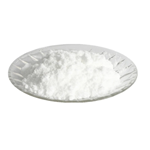 |
2024-04-24 | Agar
9002-18-0
|
US $12.00 / kg | 10kg | 99% | 300tons | Hebei Dangtong Import and export Co LTD | |
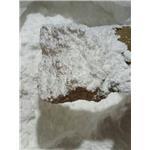 |
2024-04-23 | Agar
9002-18-0
|
US $6.00 / KG | 1KG | More than 99% | 2000KG/MONTH | Hebei Saisier Technology Co., LTD | |
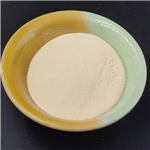 |
2024-04-15 | Bacteriological Agar
9002-18-0
|
US $1.00 / g | 10g | 99 | 20ton | ANHUI SHENGZHIKAI BIOTECHNOLOGY CO.,LTD |
-

- Agar
9002-18-0
- US $12.00 / kg
- 99%
- Hebei Dangtong Import and export Co LTD
-

- Agar
9002-18-0
- US $6.00 / KG
- More than 99%
- Hebei Saisier Technology Co., LTD
-

- Bacteriological Agar
9002-18-0
- US $1.00 / g
- 99
- ANHUI SHENGZHIKAI BIOTECHNOLOGY CO.,LTD





